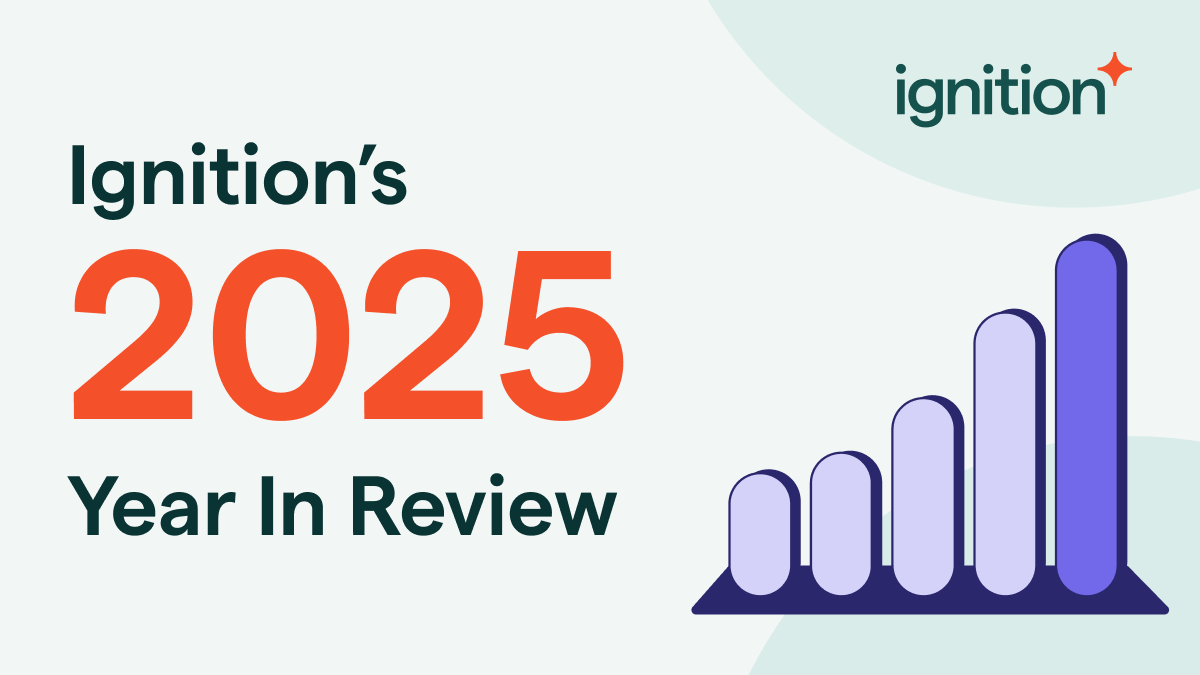How to write a statement of work: A step-by-step guide

Ever started a project only to realize halfway through that you and your client are not quite on the same page? While this may seem like a rookie mistake, it’s pretty common, especially without a statement of work (SOW).
While sometimes confused for a scope of work or even an agency contract, the three are inherently different.
An SOW outlines a project’s scope, timelines, deliverables, and pricing. Think of it as the blueprint for your project.
The scope of work is just one part of that blueprint—it focuses on the specific tasks to complete and defines boundaries to prevent scope creep. Conversely, the contract is the mother document, tying in everything from the SOW to terms like liabilities, legal protections, and dispute resolution processes.
A well-written SOW keeps everyone aligned and sets the foundation for a successful project. So, how do you create a clear, comprehensive, and client-approved one? Let’s break it down step by step.
Key takeaways:
- Start with a clear project scope and expectations: Highlighting the purpose of your project and its requirements can prevent a lot of back-and-forth with stakeholders.
- Create your project schedule and define measurable outputs: This shows clients and project team members what to expect and when to expect it.
- Make sure all project stakeholders (clients and internal team members) understand their roles: Assigning roles in your SOW can reduce the risk of missed tasks.
- Provide a transparent pricing structure: Let clients know what to expect by clearly defining your payment terms.
- Outline a change management process: Prepare for shifts in objectives or scope of work by detailing how to handle changes after initial client approvals.
- Customize SOW templates: Align statement of work templates with your project’s unique requirements.
Define the project scope and objectives clearly
The first and arguably the most crucial step in your SOW preparation journey is defining your project scope and goals. These terms set the tone for the entire document and can help promote alignment with clients throughout your working relationship.
The project scope defines what you need to do (and what you don’t need to do), while the project objectives describe the desired outcomes of your work. Make sure both are clear from the beginning to minimize the risk of disagreements and prevent team members from taking on work outside your original agreement.
Here are some examples:
- Clear scope: Design and deliver a branded website complete with a personalized domain, contact section, and portfolio page; integrate the website with a content management system (CMS); and pilot test with 20 users. Tasks exclude content writing and SEO optimization.
- Vague scope: Develop a branded, user-friendly website.
- Clear project goal: To design a company website that helps increase brand awareness by 10% within the next 12 months.
- Vague goal: To develop a company website.
With a well-defined scope and clear expectations, you can effectively set boundaries with clients. Should they have special requirements, you can refer them back to your SOW and charge for the extra work, limiting the effects of scope creep.
Effortlessly manage scope creep with confidence
Minimize the risk of lost revenue and client disagreements
Break down the deliverables and deadlines
Clearly lay out your deliverables and timelines upfront and tie each deliverable to a specific due date or phase to avoid client misunderstandings.
For example, you could schedule your website brief for the second week of your project and design mockups for the fifth week, ensuring clients know what to expect and when to expect it. Deliverables and deadlines can also serve as payment triggers if you have a milestone-based pricing structure.
For an effective SOW, set realistic deliverables and timelines. If you expect a task to take two weeks, don’t set it for one week to impress your clients. This could have the opposite effect, causing conflicts when you’re late.
Also, be flexible with your timeline, especially if you rely heavily on client input. This isn’t to say that your project schedule should be open-ended—you could add a few days to each task’s timeline as a contingency in case of delays.
Assign roles and responsibilities across teams
If you aren’t clear on who does what by when, you may experience communication breakdowns, some tasks could slip through the cracks, and you could end up with duplicate roles.
Clearly document who will do what on both sides of your partnership—the agency and the client. Ideally, your client should know when to supply brand assets, offer feedback, and initiate or complete payment.
Your team should also know who is in charge of each deliverable, who handles communications with the client, and who gives the final sign-off on major decisions to promote smooth internal processes. You could also go a step further and specify your communication frequency and channels to limit confusion.
Ignition’s automated reminders and updates feature can help you keep stakeholders on their toes. For example, you could set your platform to send payment reminders to clients a few days before their invoice due dates to reduce the risk of late payments.
Decide how you’ll price and bill the work
Being transparent about your pricing in the SOW can help you avoid awkward conversations later on. It can also limit the risk of disputes, promoting a healthy revenue stream for your agency.
When pricing your work, consider the scope, expected outcomes, projected internal costs, and the project timeline. If your project has a broad scope, a short timeline, and extensive internal expenses, your pricing should be relatively high to protect your profitability. However, also be sure to consider the client’s budget and give them some wiggle room to boost their chances of becoming return customers.
After determining your service’s worth, align it with your pricing model. There are various project pricing models you could settle on, including:
- Flat rate: You charge a set amount for the entire project.
- Hourly-based: You charge based on the time worked.
- Milestone-based: You require clients to pay after specific deliverables.
- Retainer-based: You charge a fixed rate periodically for an agreed-upon amount of work.
- Subscription-based: You set up a recurring payment schedule for your services.
Ignition gives you complete control over your pricing structure and overall payment terms. Whether you prefer one-off payments, hourly pricing, or tiered pricing, the platform has you covered. And you don’t have to choose one type of pricing model for all clients and agreements; it allows you to flexibly choose different pricing structures for each client agreement.
That said, Ignition recommends subscription-style models rather than hourly billing, as the latter can be limiting. Some clients may focus more on the hours worked than the value delivered, potentially rushing projects to save money. With automation technologies like AI tools, you could complete work in less time, resulting in lower revenue, even when you offer immense value.
Document the sign-off and change management process
Your client needs to approve your SOW before your document can come into effect. For a smooth process, develop a clear acceptance criterion, clarifying who (from the agency and client’s side) can approve your SOW. Also, invest in tools that allow e-signatures to facilitate quick sign-offs regardless of location.
A sign-off workflow, however, isn’t complete without a change management process. You need to prepare for shifts in goals, desired project deliverables, pricing, and timelines by clarifying how SOW terms will be reviewed, what happens if clients request changes, and who can make final sign-offs on SOW adjustments.
Ignition can help with both document sign-offs and change management. The platform allows e-signing, allowing stakeholders to approve SOWs remotely. Further, it lets you edit initial agreements to reflect agreed-upon changes, as well as automates invoicing updates to avoid scope creep.

Include the right supporting details
As mentioned before, a statement of work primarily details deliverables, timelines, and pricing terms. But, there may be times when you need to include additional details to make sure every stakeholder is on the same page.
Some supporting details you may need to add include:
- Project dependencies: Clarify conditions that must be met to progress to different project phases.
- Legal requirements: Document how to handle intellectual property ownership and liabilities.
- Cancellation clauses: Detail what happens when either party terminates your agreement.
- Confidentiality requirements: Highlight what to keep private throughout the project.
- Scope management key performance indicators (KPIs): List metrics that could help evaluate your agency’s success in meeting project requirements.
- Risks and assumptions: Outline known risks (based on similar project undertakings) and key expectations, such as easy access to a client’s resources during the project lifecycle.
While these details may not always be necessary, they can provide more clarity in high-stakes projects and reduce the risk of conflicts stemming from miscommunication.
Use a real-world example or template to get a jumpstart
If you’re new to statement of work documents or simply want a quick doc preparation process, you can always opt for templates. They show you what to include in your document and reduce the burden on your team by eliminating the need to create your own SOW from scratch.
However, while it may be tempting to use SOW templates as is, don’t—they may not always include all the elements your project’s SOW needs. Instead, customize them as needed to capture your agency’s and client’s expectations.
Ignition’s professionally vetted proposal templates are excellent starting points for IT, marketing, PR, HR, and real estate service providers because they contain SOW sections that include legally compliant terms for these industries.
That’s not all. The templates are also fully customizable and combine key elements like e-signatures and automated invoicing and billing, allowing for a seamless agency and client experience.
Need customizable and scalable statement of work documents?
See how Ignition’s industry-vetted engagement letters can support you.
Connect your SOW to your billing and client lifecycle
Creating an effective statement of work is a great first step in protecting your agency’s and client’s interests. However, when treated as a one-time contract deliverable, it may not do much in terms of streamlining your overall engagement experience.
To minimize the risk of poor experiences like late payments and complicated contract renewals, turn your SOW into a workflow using platforms like Ignition. When you use Ignition to create your online proposal and, by extension, your SOW, the platform will treat it as part of an ongoing client lifecycle process. This transforms it from a static document to a revenue-driving workflow that could encourage repeat clients and open up new revenue opportunities.
Here’s how: the Ignition platform will connect your SOW to payment collection for seamless invoicing, monitor deliverables and payments in real time, and integrate your document to finance, sales, and deal pipelines for smooth progress tracking and renewal processes.
Contracts made simple
See how Ignition helps you create proposals, automate client approvals, and collect payment details in minutes.
How the most successful agencies turn scope into cash flow
Successful agencies turn scope into cash flow by investing in reliable, connected platforms like Ignition. Ignition is a top option for modern enterprises because it’s not only easy to set up and use but also offers extensive features that could help improve client relationships and businesses’ revenue management processes.
Specifically, Ignition reduces inefficiencies throughout the client lifecycle (from onboarding to the contract renewal stage) by:
- Providing editable statement of work templates (included in proposal templates) to reduce the level of effort required to prepare these documents.
- Allowing one-click service expansions after client agreement negotiations to manage scope creep effortlessly.
- Collecting clients’ payment details at the SOW acceptance (contract signing) stage.
- Integrating automated billing and payment collection into online proposals (and, by extension, SOW workflows).
- Providing a centralized interface through which clients can view and sign SOW documents remotely.
- Offering real-time insights into clients’ payment statuses to promote well-informed reminders.
- Integrating with accounting platforms like QuickBooks Online and Xero to automate invoicing and reconciliation after clients sign off on engagement agreements.
- Allowing you to renew proposals (and SOWs) in bulk.
Many businesses are already reaping the benefits of leveraging the Ignition platform. Digital Marketing Dude (DMD), for example, no longer has to prepare proposals from scratch, manually enter clients’ data into their system, or chase payments.
The digital marketing agency uses Ignition’s custom proposal templates and automated billing and payment collection features, a move that’s saving them 10 to 12 hours every month.
Turn your SOW into a growth engine with Ignition
The SOW makes sure you’re on the same page with your clients. However, it should just be the beginning of a long-term client engagement workflow. For optimal experiences, use it as a launchpad to streamline other project management processes, like invoicing.
With Ignition, you can do just that. The Ignition platform supports you throughout the entire client journey by offering proposal templates with SOW sections to reduce admin work, facilitating e-signing to promote quick sign-offs, allowing one-click service extensions to manage scope creep, and automating invoicing and billing (from the proposal stage) to protect your cash flow.
Want to transform SOWs into cash flow?
Lean on Ignition when writing your proposals


